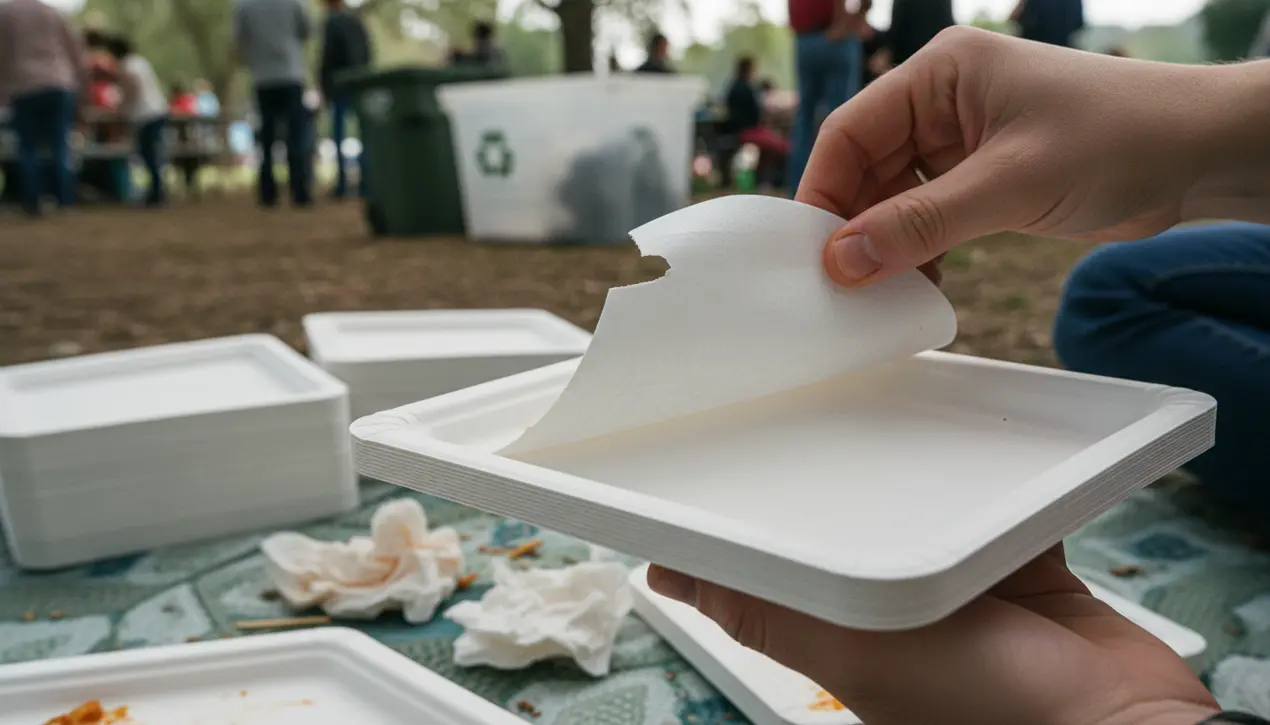
SciencephysicsMaterials Science
Peelable paper plates reduce waste with removable layers.
RA
Rachel Adams
2 hours ago7 min read2 comments
In a world drowning beneath the disposable detritus of modern convenience, a simple innovation emerges with profound ecological promise: peelable paper plates. These aren't your typical single-use dishware, destined for an immediate, wasteful fate in a landfill.Instead, they are square-shaped, multi-use platforms engineered with discreet tabs on their sides. A user lifts a tab and peels away a used layer, revealing a fresh, clean surface underneath, dramatically extending the product's life before it must be discarded.This seemingly modest design intervention, known as Peelware, represents a critical skirmish in the larger war against our throwaway culture, a conflict whose frontline is the global packaging waste crisis that sees billions of single-use items clogging ecosystems from the Great Pacific Garbage Patch to urban waterways. The fundamental problem with conventional disposable plates, whether paper, plastic, or compostable, is their monolithic lifecycle—one brief meal, one permanent footprint.Even compostable options often require specific industrial facilities to break down, a logistical hurdle many municipalities cannot overcome, rendering their green claims moot. Peelware's layered approach directly attacks this inefficiency, embodying the core principles of a circular economy by maximizing utility from a single item and minimizing raw material extraction.Imagine the cumulative impact at a large-scale event—a music festival, a corporate gathering, a school picnic—where the mountain of waste could be reduced by a factor of five or more simply because one plate serves multiple times. From a biological standpoint, the innovation is elegantly sound.Paper, a cellulose-based material, is inherently more compatible with natural decomposition cycles than petroleum-based plastics, which fragment into microplastics that infiltrate every level of the food web, from zooplankton to human bloodstreams. By structuring this biodegradable material in a smart, multi-layered format, the designers are not just creating a product but proposing a new behavioral paradigm.It challenges the deeply ingrained habit of immediate disposal and replaces it with an act of conscious renewal. However, the success of such a solution hinges on more than just clever engineering; it depends on widespread consumer adoption and proper waste management infrastructure.Will people bother to peel? Will municipal recycling streams be able to process these multi-material constructs, or will they be treated as contaminants? These are the crucial questions that determine whether a brilliant lab idea becomes a genuine environmental savior. The history of green products is littered with good intentions that failed at scale due to impracticality or public indifference.Yet, the urgency has never been greater. With global plastic production set to double in the next two decades and paper production contributing to significant deforestation, any innovation that decouples convenience from ecological devastation is not just welcome—it is essential.Peelable plates may seem like a small step, but in the intricate and fragile system of our planet's health, such targeted, thoughtful designs are the very threads with which a more sustainable future is woven. They remind us that the most powerful solutions often lie not in complex, high-tech fixes, but in reimagining the ordinary objects of our daily lives to work in harmony with, rather than against, the natural world.
#featured
#sustainable design
#disposable dishware
#waste reduction
#peelable plates
#innovation
Stay Informed. Act Smarter.
Get weekly highlights, major headlines, and expert insights — then put your knowledge to work in our live prediction markets.
Related News
Comments
Loading comments...
© 2025 Outpoll Service LTD. All rights reserved.